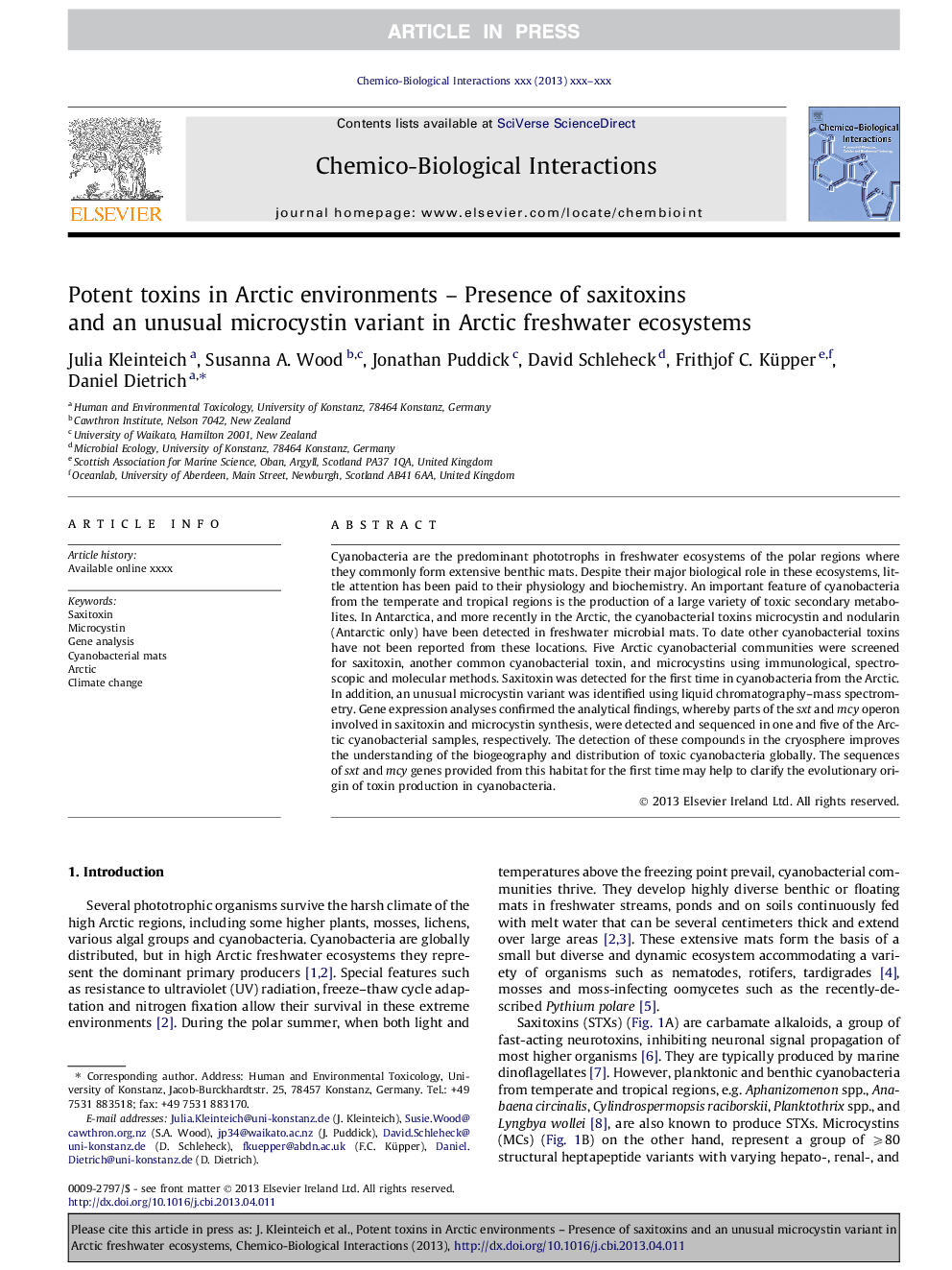| کد مقاله | کد نشریه | سال انتشار | مقاله انگلیسی | نسخه تمام متن |
|---|---|---|---|---|
| 5848156 | 1130137 | 2013 | 9 صفحه PDF | دانلود رایگان |
عنوان انگلیسی مقاله ISI
Potent toxins in Arctic environments - Presence of saxitoxins and an unusual microcystin variant in Arctic freshwater ecosystems
ترجمه فارسی عنوان
سموم قدرتمند در محیط قطب شمال - حضور سکسیتوکسین ها و یک نوع غیر معمول میکرو سستین در اکوسیستم های آب شیرین قطب شمال
دانلود مقاله + سفارش ترجمه
دانلود مقاله ISI انگلیسی
رایگان برای ایرانیان
کلمات کلیدی
ساکسیتوکسین، میکروتیستین، تجزیه ژن، تشک های سایانو مکانیکی، قطب شمال، تغییر آب و هوا،
موضوعات مرتبط
علوم زیستی و بیوفناوری
علوم محیط زیست
بهداشت، سم شناسی و جهش زایی
چکیده انگلیسی
Cyanobacteria are the predominant phototrophs in freshwater ecosystems of the polar regions where they commonly form extensive benthic mats. Despite their major biological role in these ecosystems, little attention has been paid to their physiology and biochemistry. An important feature of cyanobacteria from the temperate and tropical regions is the production of a large variety of toxic secondary metabolites. In Antarctica, and more recently in the Arctic, the cyanobacterial toxins microcystin and nodularin (Antarctic only) have been detected in freshwater microbial mats. To date other cyanobacterial toxins have not been reported from these locations. Five Arctic cyanobacterial communities were screened for saxitoxin, another common cyanobacterial toxin, and microcystins using immunological, spectroscopic and molecular methods. Saxitoxin was detected for the first time in cyanobacteria from the Arctic. In addition, an unusual microcystin variant was identified using liquid chromatography-mass spectrometry. Gene expression analyses confirmed the analytical findings, whereby parts of the sxt and mcy operon involved in saxitoxin and microcystin synthesis, were detected and sequenced in one and five of the Arctic cyanobacterial samples, respectively. The detection of these compounds in the cryosphere improves the understanding of the biogeography and distribution of toxic cyanobacteria globally. The sequences of sxt and mcy genes provided from this habitat for the first time may help to clarify the evolutionary origin of toxin production in cyanobacteria.
ناشر
Database: Elsevier - ScienceDirect (ساینس دایرکت)
Journal: Chemico-Biological Interactions - Volume 206, Issue 2, 25 November 2013, Pages 423-431
Journal: Chemico-Biological Interactions - Volume 206, Issue 2, 25 November 2013, Pages 423-431
نویسندگان
Julia Kleinteich, Susanna A. Wood, Jonathan Puddick, David Schleheck, Frithjof C. Küpper, Daniel Dietrich,
